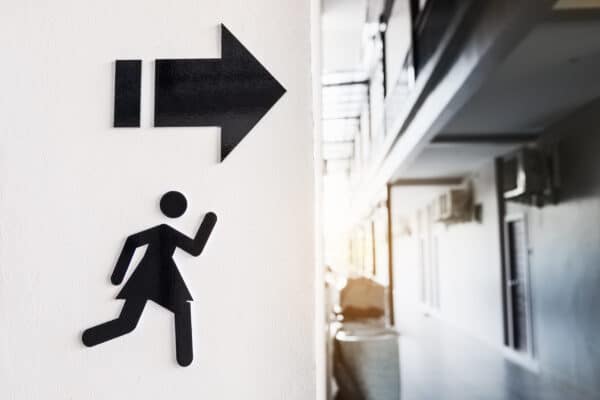WHAT IS Overactive Bladder (OAB)?
Overactive bladder (sometimes called overactive bladder syndrome) is one of the causes of urinary incontinence in women. It is a type of urge incontinence that creates a sudden need to urinate that may be difficult to control. Affecting over 30 million Americans, it may cause urinary frequency in the daytime as well as during the night. It is not unusual for women who have an overactive bladder to limit activities and social functions to avoid embarrassing episodes of urinary urgency. The good news is that advancements in urological procedures and techniques offer highly effective treatments to restore bladder function and overall health.

CAUSES OF OVERACTIVE BLADDER
Overactive bladder occurs when the muscles that control the bladder involuntarily contract. This can occur when the bladder is full or not and produces a sudden need to urinate. There are several medical conditions that can contribute to the overactive bladder such as:
- Neurological diseases such as Parkinson’s Disease and Multiple Sclerosis or a neurological disorder such as a stroke
- Urinary tract infection
- Diabetes
- Bladder stones
- Hormonal changes that occur during menopause
- Certain medications that cause an increase in the urine volume
- Excessive alcohol consumption
- Excessive caffeine
- Incomplete bladder emptying
- Age
- Cognitive decline
OVERACTIVE BLADDER SYMPTOMS
A healthy bladder muscle expands as it fills with urine. Once it is about half full, the nerves in the bladder trigger an urge to urinate. In a person with overactive bladder, the amount of urine the bladder can hold is disrupted causing the bladder muscle to contract suddenly before the bladder is full. This leads to sudden, frequent and intense urges to urinate and occasionally there is leakage of urine.
Some symptoms are:
- Sudden urge to urinate that is difficult to control
- Sudden loss of urine after an urgent need to urinate
- Frequent need to urinate – more than 8 times in a 24 hour period
- Needing to urinate at night at least twice, also called nocturia
It is not uncommon for older adults to experience an overactive bladder; however, it is not a normal part of aging. If you are experiencing sudden or frequent urges to urinate that are disrupting your life and preventing you from enjoying certain activities, call Blue Ridge Urological today at (540) 405-8232.
DIAGNOSING AND TREATING OVERACTIVE BLADDER
If you are experiencing symptoms of overactive bladder and it is impacting your quality of life, it is important to consult a urologist to determine the root cause of the condition. At Blue Ridge Urological, one of our board certified urologists will perform a complete examination which will include medical history, physical exam, urinalysis, cough stress tests and possibly a cystoscopy. Your doctor may also want to perform bladder studies or urodynamic testing to determine how well the muscles of your bladder and sphincter are working. We offer specialized treatments for female urinary incontinence and other forms of incontinence such as stress urinary incontinence or an overactive bladder caused by other underlying medical conditions.
CONSERVATIVE OAB TREATMENT OPTIONS:
For patients who are experiencing mild to moderate symptoms, the doctor will most likely recommend conservative measures to address the problem. Dietary modifications can help reduce the sudden urge to urinate.
Other conservative treatment options include:
If conservative measures to treat overactive bladder are not effective, there are other procedures that may help to reduce sudden contractions of the bladder or pelvic floor muscles. Bladder BOTOX® is usually the next step in treating patients who have tried behavioral therapy, medications and pelvic floor rehabilitation without success. It involves Botox injections placed carefully into the bladder wall. The goal of Bladder BOTOX® therapy is to decrease the frequency and relieve bladder spasms to restore quality of life for women who suffer from overactive bladder and urinary incontinence. This therapy is also particularly helpful in treating spastic bladder and urinary incontinence.
At Blue Ridge Urological, our board certified providers are highly experienced in the diagnosis of and treatment of overactive bladder. If you are experiencing symptoms that limit your activities or keep you from enjoying life, a urologist can perform specialized tests to help determine the cause. For more information on overactive bladder, call our office today at (540) 405-8232 or schedule your consultation online.

